
Our solar collectors need a temperature sensor, as well as our tank.
The basic and necessary function of these sensors is to compare the temperature differences between the tank and the collector.
Both temperatures can offer us other functionalities, such as limiting the temperatures of the devices in the face of extreme temperatures or freezing.
But The fundamental part of monitoring the temperatures in the solar heater is knowing when to take the water from the collector to the tank,
and when to stop, all to finally get the hottest possible water in our tank.
We must know that these temperature sensors are strictly necessary in a forced circulation solar heating system.
If your solar heater model is based on the thermosyphon model, it will not be necessary, but you will need it if you want to know what temperature your tank is at, or if you require the use of an auxiliary backup heater.
There are several types of temperature probes, and depending on their type, so will their reliability in reading and their durability.
If you want to know more about the type of temperature probes you can use, click in Types of temperature probes
The temperature sensors or probes that come with a metal encapsulation (I mean bare metal probes without the sheaths) are in theory more or less watertight. Even some commercials say so.
But from my own experience I have been able to verify that this seal fails with the passage of time, completely losing the probe irremediably.
The probes must always go inside a thermostatic probe sleeve.
So we will have to manage to correctly insert each pod in its necessary place.
This is the sheath to install the temperature probe properly:
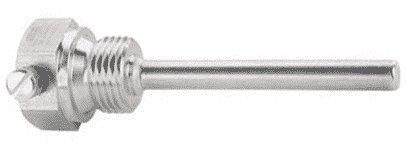
This pod, as you can imagine, is hollow, and the sensor goes inside it.
Its function is to put the thermal probe in contact in a totally protected environment from any fluid.
As the sheath is metallic, its thermal conductivity is adequate for this.
In other words, it helps us to introduce the probe into the water, without it being wet.
Or we could also say that we are going to waterproof our temperature probes with the use of these sheaths.
Inside the pod we are interested and we should put a little of, although it is not really mandatory.
The idea is to make the temperature probe more quickly able to receive the change in temperatures that are going to happen outside the sheath.
This thermal paste is the same that we use in cooling desktop or laptop computer processors.
We are interested that this sheath comes equipped with a screw, which will help us to fix the cable and the probe does not move from its place inside.
If we use thermal paste with more reason to use this screw.
The pod must strategically pass through the container to be measured, without allowing the container in question to lose water.
The proper form is explained below.
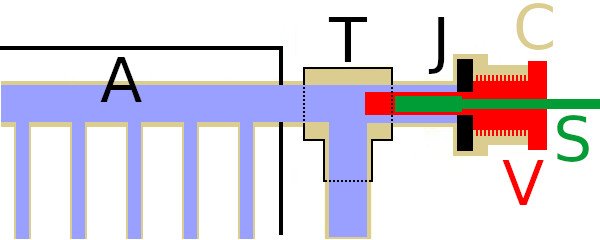
Representation of the elements mentioned in the photo when the probe and sheath are inserted into the manifold:
A) Represents the collector box
T) Represents the T to join the probe to the collector water circuit
C) Represents the extension of the collector through the "T", to introduce and submerge the sheath
J) Common plumbing joint so that the water touches the sheath but does not flow out
V) Sheath
S) Temperature probe
It may happen that you cannot find a female terminal to connect with the "T", and your plumbing establishment offers you the standard male connector, and a female-female adapter.
It would be the same assembly as the previous one, with the adaptation of connectors.
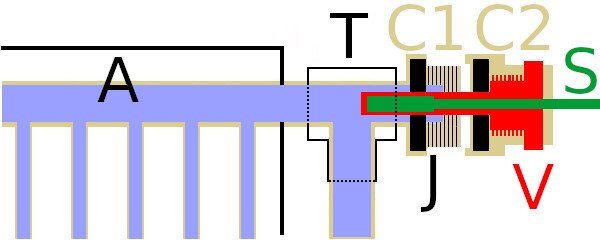
Representation of the elements mentioned in the photo when the probe and sheath are inserted into the manifold:
A) Represents the collector box
T) Represents the T to join the probe to the collector water circuit
C1) Represents the extension of the collector through the "T" to introduce and submerge the sheath
C2) Female-female adapter to couple the sheath to C1
J) Common plumbing joints so that the water touches the sheath but does not go outside
V) Sheath
S) Temperature probe
This was my probe inserted with the coupling and gasket.
In this case there is no pod, and that was my big mistake, because the probe ends up breaking down because of the water.
But worth the example of how the "T" looks on the manifold and the coupling of the probe and sheath
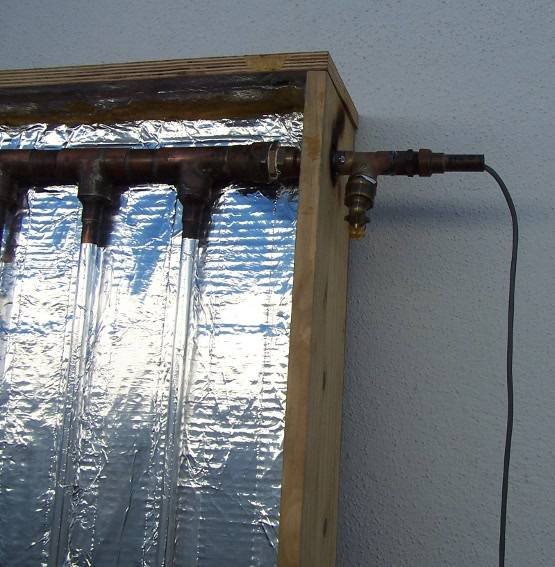
It is always located at the top of the collector, which is where the hottest part of it is.
We could also place it in the lower part, but it could be imprecise, since the water at rest tends to form a gradient where the heat remains at the top and the back part cools.
As can be seen graphically in the previous drawing, the probe in the collector is installed in the upper part of it, in the passage of the water.
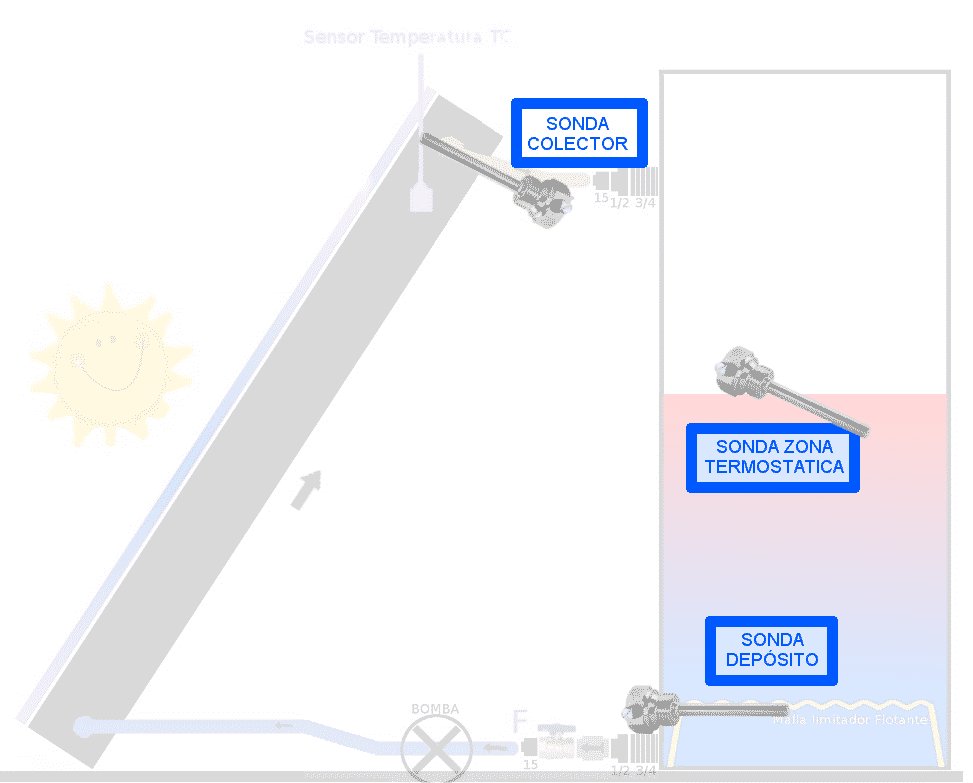
For the tank we cannot use copper terminals because they have little surface to grip the tank, especially if the tank is made of plastic material.
So in this case the most appropriate is a cable gland.
A grommet is this:

The grommets that we are going to use are very typical and easy to find in the plumbing and / or plumbing section.
It is convenient that it be a plastic or pvc cable gland, to avoid oxidation and reactions with water.
First we will have to make a hole in the tank and install the cable gland so that it is completely watertight.
Surely the cable gland will be about 1 "and our copper tube will be 15mm.
So in this case we will look for an adapter.
On the copper connector, we will make the following connections. (It goes without saying that if the connector is a male female, we will need a female-female adapter in the same way that has been exposed in the previous one mentioned with the collector)
I expose graphically:
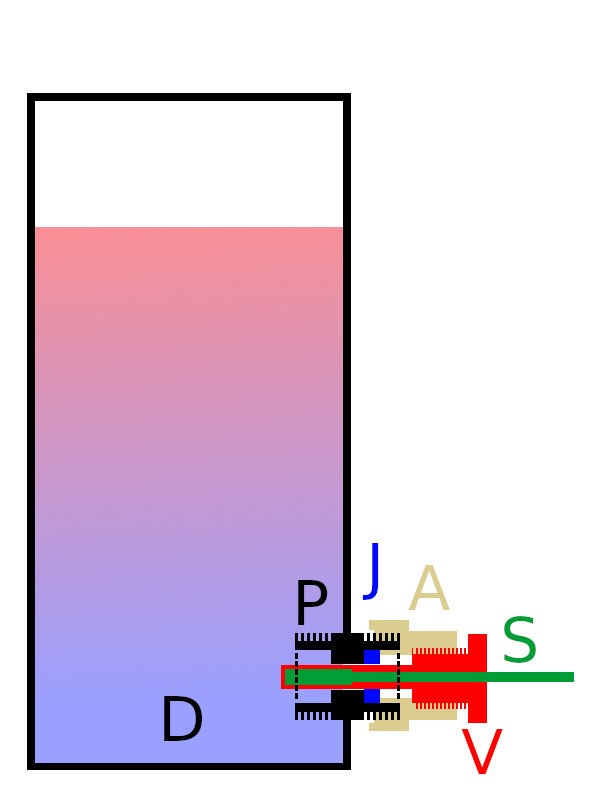
Representation of the elements installed in the tank:
D) Represents the water tank
P) Represents the cable gland
J) Represents a common plumbing joint, to pass through the sheath without the water escaping to the outside
A) Adapter to attach the sheath to the cable gland
V) Sheath with the temperature probe inside
S) Temperature probe